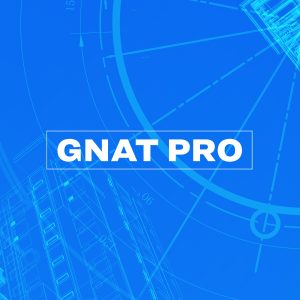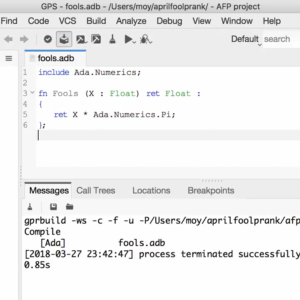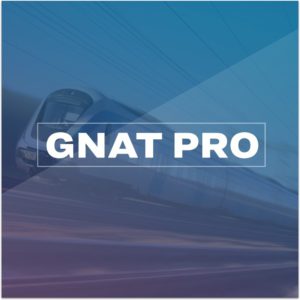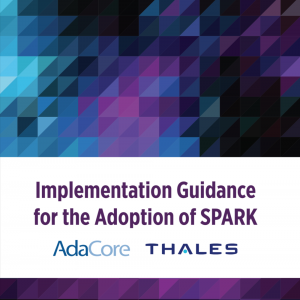
Ada in Practice, a New Learn Course
A new Learn course is now available, focusing on how to use the Ada language to express common idioms, both language-dependent and -independent.
A new Learn course is now available, focusing on how to use the Ada language to express common idioms, both language-dependent and -independent.
You may have noticed that over the past two years, we have made significant updates to our CodePeer product - the most visible change being the renaming of the product itself, now branded as “GNAT Static Analysis Suite”. For those who are already using the product and are looking to use the new version, it may be a good time to step back and share our vision, at AdaCore, for static analysis.
Today I want to go over some internal mechanisms of a Photoshop-like application to better illustrate an up-and-coming tech, GNAT for CUDA®, developed at AdaCore.
We are happy to announce the availability of GNAT Pro for C++, a versatile development environment for bare-metal targets capable of supporting different subsets of the C++ language. It constitutes the best choice for safety-critical bare-metal systems that want to reduce complexity, memory footprint and execution-time overhead, paving the way to software certification. GNAT Pro for C++ targets popular hardware in the avionics, defense, railway, and space domains: PowerPC (32 bits), x86 (64 bits), RISC-V (32/64 bits), LEON3 (32 bits) and ARM (32/64 bits).
AdaCore has partnered closely with Lynx to deliver Ada language support alongside its LYNX MOSA.ic software framework that comprises a real-time operating system (LynxOS-178), Linux and hypervisor (LynxSecure) technology.
A new online Learn course has been published offering an Introduction To Embedded Systems Programming.
Through the HICLASS UK research group, AdaCore has been developing security-focused software development tools that are aligned with the objectives stated within the avionics security standards. In addition, they have been developing further guidelines that describe how vulnerability identification and security assurance activities can be described within a Plan for Security Aspects of Certification.
News from the Ada front The next revision of the Ada standard is now almost ready, so it's time for a status update on where GNAT and AdaCore stand on this front!
We are happy to announce that the GNAT Community 2020 release is now available! Read the post for access to download and to find out about this year's release highlights.
Part of our core expertise at AdaCore is to integrate multiple technologies as smoothly as possible and make it a product. This started at the very beginning of our company by integrating a code generator (GCC) with an Ada front-end (GNAT) which was then followed by integrating a debugger engine (GDB) and led to today's rich GNAT Pro offering.
Interested in participating in the evolution of the Ada or SPARK languages? We have something for you.
One of the most criticized aspect of the Ada language throughout the years has been its outdated syntax. Fortunately, AdaCore decided to tackle this issue by implementing a new, modern, syntax for Ada.
As we see the importance of software grow in applications, the quality of that software has become more and more important. Even outside the mission- and safety-critical arena customers are no longer accepting software failures (the famous blue screens of death, and there are many...). Ada has a very strong answer here and we are seeing more and more interest in using the language from a range of industries. It is for this reason that we have completed our product line by including an entry-level offer for C/C++ developers wanting to switch to Ada and reinforced our existing offer with GNAT Pro Assurance for programmers building the most robust software platforms with life cycles spanning decades.
The support for physical units in programming languages is a long-standing issue, which very few languages have even attempted to solve. This issue has been mostly solved for Ada in 2012 by our colleagues Ed Schonberg and Vincent Pucci who introduced special aspects for specifying physical dimensions on types. This dimension system did not attempt to deal with generics though. As was noted by others, handling generics in a dimensional analysis that is, like in GNAT, a compile-time analysis with no impact on the executable size or running time, is the source of the problem of dimension handling. Together with our partners from Technical Universitat München, we have finally solved this remaining difficulty.
For those users of the GNAT GPL edition, we are pleased to announce the availability of the 2017 release of GNAT GPL and SPARK GPL.
It is notoriously hard to prove properties of floating-point computations, including the simpler bounding properties that state safe bounds on the values taken by entities in the program. Thanks to the recent changes in SPARK 17, users can now benefit from much better provability for these programs, by combining the capabilities of different provers. For the harder cases, this requires using ghost code to state intermediate assertions proved by one of the provers, to be used by others. This work is described in an article which was accepted at VSTTE 2017 conference.
While SPARK has been used for years in companies like Altran UK, companies without the same know-how may find it intimidating to get started on formal program verification. To help with that process, AdaCore has collaborated with Thales throughout the year 2016 to produce a 70-pages detailed guidance document for the adoption of SPARK. These guidelines are based on five levels of assurance that can be achieved on software, in increasing order of costs and benefits: Stone level (valid SPARK), Bronze level (initialization and correct data flow), Silver level (absence of run-time errors), Gold level (proof of key properties) and Platinum level (full functional correctness). These levels, and their mapping to the Development Assurance Levels (DAL) and Safety Integrity Levels (SIL) used in certification standards, were presented at the recent High Confidence Software and Systems conference.
In my previous blog article, I exposed some techniques that helped me rewrite the Crazyflie’s firmware from C into Ada and SPARK 2014, in order to improve its safety.
Following the current trend, the GNATcoverage project moves to GitHub! Our new address is: https://github.com/AdaCore/gnatcoverage
A new feature of SPARK2014 allows to use a memcached server to share proof results between runs of the SPARK tools and even between developers on different machines. Check out this post to see the details.












